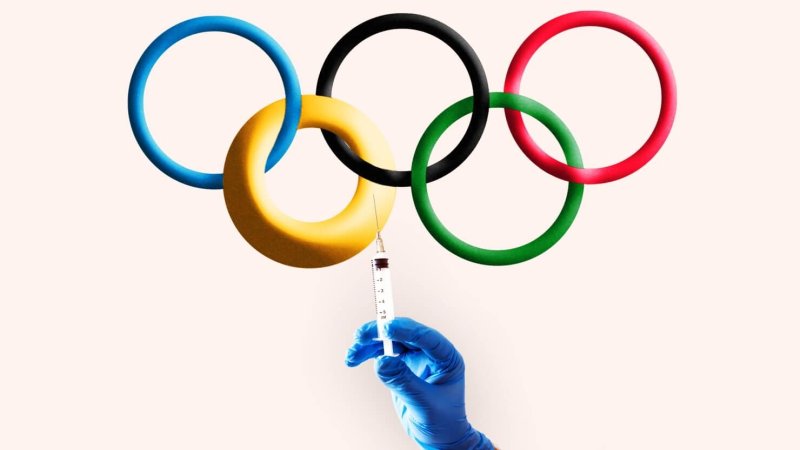In the days leading up to the opening ceremonies, Olympic news headlines were dominated by stories about Russia and its athletes attempting to overturn a ban over a massive doping program. Dozens of athletes and coaches were barred from the event, while others — who can prove a clean history — are being allowed to compete as neutral OARs or “Olympic athletes from Russia.” The country will receive zero medals from the competition.
The unprecedented enforcement action surrounds a traditional doping program of the drug-induced variety. But could genetics-doping be next?
That’s certainly on the minds of enforcement officials, with the World Anti-Doping Agency (WADA) announcing on February 5 that it is considering a plan over the next few years to require a sort of “biological passport” for athletes, who would have their genomes sequenced to help regulators look for illegal modifications.
Those who cheat in professional sports and those who catch them have been locked in a Red Queen struggle for centuries. With the advent of easy gene-editing tools like CRISPR, scientists and sport commentators alike have speculated that unscrupulous athletes may attempt to gain advantages over their competition. CRISPR editing is currently undergoing a handful of human trials, all of which are for medical, not performance-enhancing, purposes. Nonetheless, WADA is attempting to pre-empt the use of genetic engineering for athletic means by banning the use of all genetically-modified cells and gene therapies with “the potential to enhance sport performance.”

A ban on “gene doping” has existed since 2003, but only one test has been developed in that time. At the 2016 Rio Olympics, athletes’ blood was tested for added copies of a gene coding for EPO, a hormone that increases red blood cell levels. In the more than a decade that the gene doping ban has existed, not one athlete has actually been banned or otherwise run afoul of the rule. “Despite sensational and scientifically unfounded claims occasionally seen in the media, WADA is not presently aware of any athletes who are gene doping,” said the agency in an email to Gizmodo.
The new rule has expanded the gene doping ban by adding to the list of banned substances any “gene editing agents designed to alter genome sequences and/or the transcriptional or epigenetic regulation of gene expression.” Such wording appears tailored to address the new genetic engineering paradigms. However, it also points to the profound uncertainties inherent in identifying cheaters when the cheating is buried deep within the athlete’s own programming.
Performance-enhancing genetic alterations would almost certainly be harder to detect than traditional performance-enhancing drugs. Changes to an athlete’s DNA could be as small as a few base pairs, making the line between an athlete who was born with a fortunate mutation and one who cheated blurry, if not completely obfuscated. Furthermore, if the edits were limited to one part of the body, such as a specific muscle tissue, they would not be discoverable through a blood test. Testing every individualized cell or tissue that could possibly be modified to improve athletic performance would almost certainly be financially and logistically unfeasible.
WADA has declined to elaborate on how it plans to enforce its new rule, or whether the rule is even liable to be needed in the foreseeable future. “At present, WADA is closely following developments in this area to define the best technique for the detection of gene editing if and when it were to be used as a doping method,” explained the agency.
The agency has left open the possibility that genetic therapy and engineering for medical purposes will not disqualify athletes from competition. “Generally, performance enhancement implies enhancement beyond a return to normal,” noted WADA spokesman Maggie Durand in a statement to the New Scientist. However, the distinction between performance and medicine is not always clear, and Durand added that “you may appreciate that this is not always easy to prove definitively.”
While there is little indication that gene doping will become a major problem in the immediate future, preliminary research on rats suggests that such enhancement is not theoretically impossible. Through the insertion of new genes and the expression of previously dormant ones in the rodent genome, researchers have been able to induce a number of changes relevant to sports.

Specifically, modifications to the GHRH gene increased muscle mass and muscle strength in both the “patient” generation rats and their offspring. Tweaks to a triad of genes known as GASP-1, FLRG, and SKI led to a faster regeneration and differentiation of muscle precursor cells into the mature myofibers that constitute healthy muscle. Other genetic alterations resulted in effects such as reduced inflammation and even reductions in pain felt by the rats by expressing genes that increased the activation of natural opiate receptors.
Such changes could impact sports beyond just the achievement of dishonest records. Increased strength, improved recovery, and reduced pain could lead to an increase in strategically aggressive and reckless styles of competition, particularly in team sports such as rugby and football that involve frequent physical contact.
Even if these modifications could be cleanly transferred to human genomes, it is highly unlikely that they would gain approval from national medical ethics boards. Thus, their emergence would be further hampered by having their development forced into secrecy. This does not mean that covert development will never occur, especially in a world where athletics are is a $1.3 trillion industry and Olympic achievement is considered an important manifestation of a nation’s soft power. Nonetheless, years will likely pass until the WADA’s gene doping ban is either enforceable or necessary.
Sean Hall is a writer and engineering student at Santa Rosa Junior College exploring the overlap between politics and synthetic biology. Follow him on Twitter at @seantheserene.































